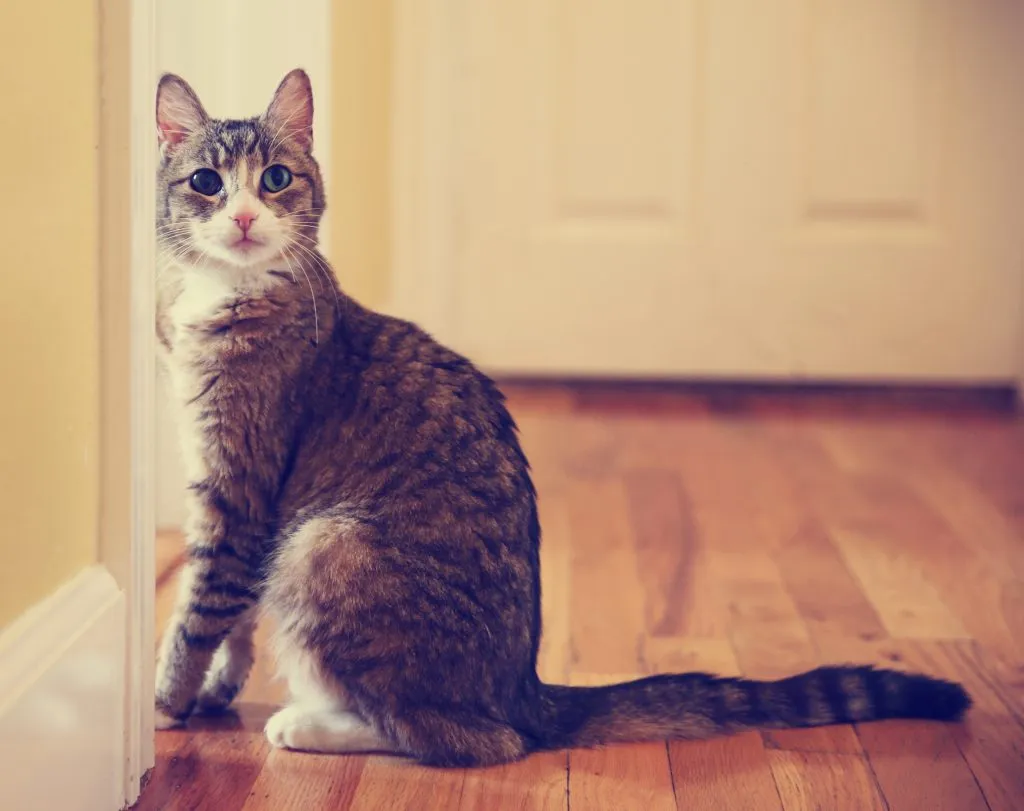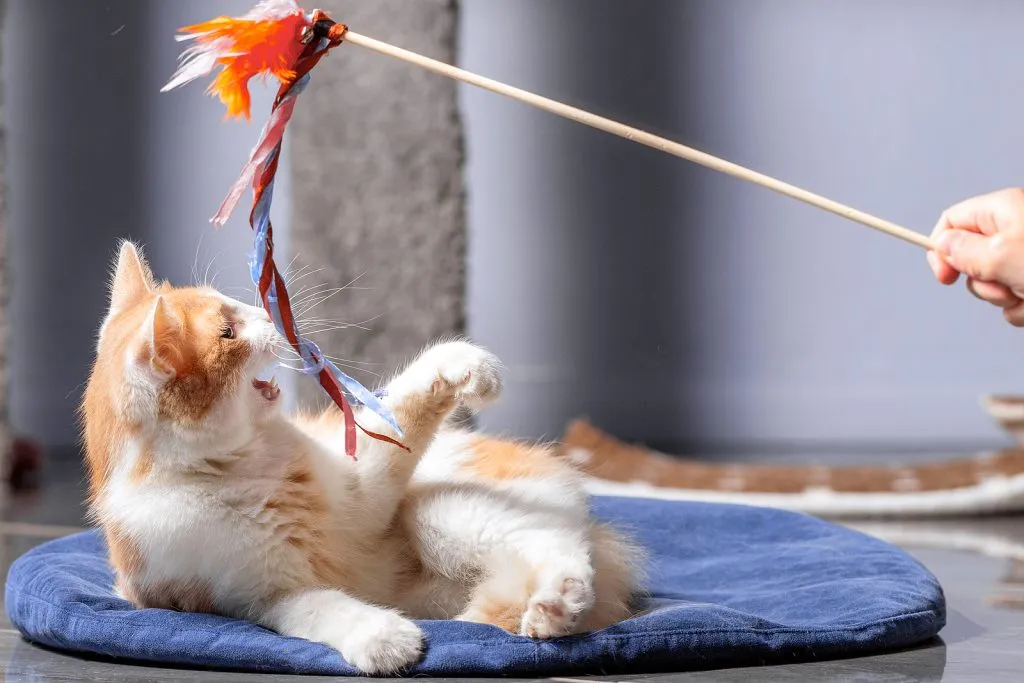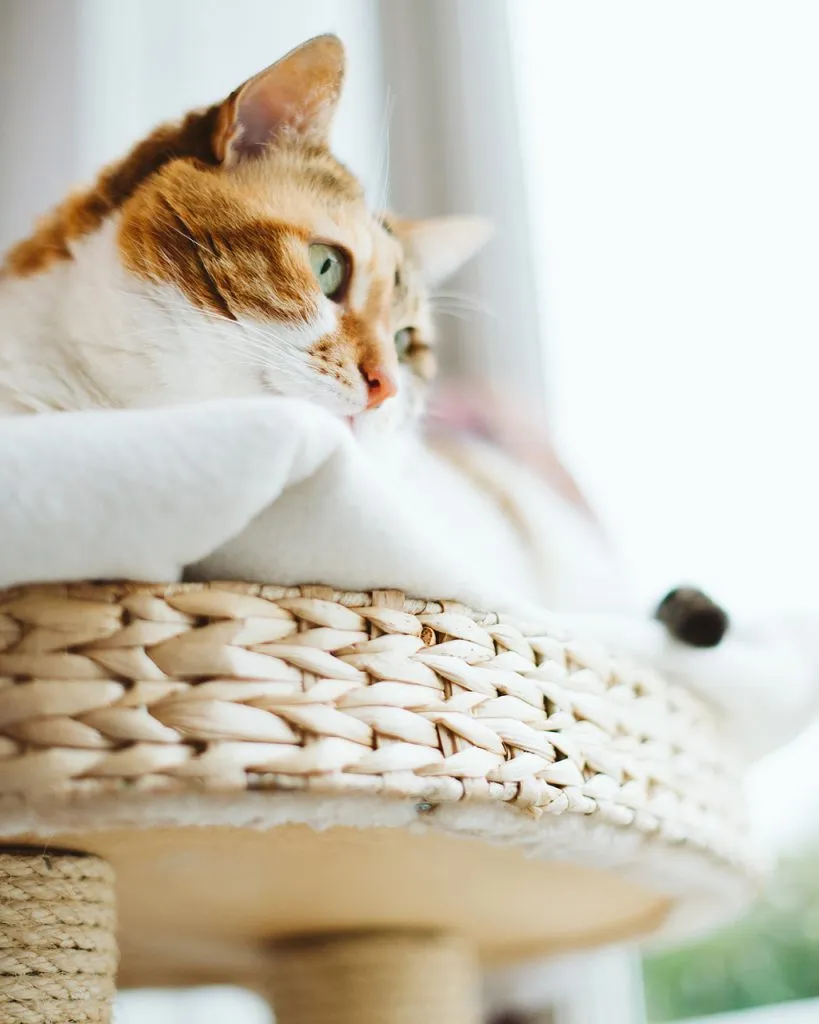Is your cat’s persistent meowing at the door driving you crazy? You’re not alone. Many cat owners experience the frustration of a cat that won’t stop meowing at the door, demanding attention or access to forbidden territories. This common feline behavior, while sometimes endearing, can quickly become disruptive, especially during the quiet hours of the night. Understanding the root cause of this vocal communication is the first step toward finding a solution that benefits both you and your furry companion. Fortunately, with expert insights and a bit of patience, you can effectively address this behavior and restore tranquility to your home. We’ll explore the reasons behind your cat’s insistent cries and provide actionable strategies to help them become more comfortable and less vocal around closed doors, ensuring a happier and quieter environment for everyone.
Understanding Why Your Cat Meows at the Door
Every cat possesses a unique personality and a distinct set of quirks, but one behavior that frequently perplexes owners is the constant meowing at doors. To tackle this effectively, it’s crucial to delve into the underlying motivations behind such vocalizations. Unlike kittens, adult cats primarily meow to communicate with humans, not with other felines. This means that when your cat relentlessly meows at a door, they are trying to convey a specific message or desire to you, often akin to saying, “Please, open that door!”
Cats are inherently curious creatures, driven by an insatiable desire to explore new environments and discover what lies beyond their immediate reach. A cat that won’t stop meowing at the door is often expressing this innate curiosity, eager to investigate the mysteries that a closed door represents. It’s their way of asking, “What exciting things are happening on the other side?” This exploratory urge is deeply ingrained in their nature and can be a significant factor in their door-related vocalizations.
Furthermore, cats utilize meowing as a complex form of communication to interact with their human companions. When your feline friend stands by the door and vocally expresses themselves, they might be signaling a variety of needs. These could include a craving for attention, a demand for food, or simply a declaration of boredom. Recognizing these potential reasons is vital for establishing a more harmonious living environment for both you and your pet. By understanding what your cat is attempting to communicate, you can begin to address their needs appropriately and effectively manage their door-meowing habits. This insight is the foundation for implementing strategies that will help stop your cat from meowing at the door.
 A small tabby cat with green eyes is sitting patiently by a white door, looking expectantly.
A small tabby cat with green eyes is sitting patiently by a white door, looking expectantly.
If this persistent meowing behavior is becoming overwhelming, there are several simple yet effective methods you can employ to help your cat quiet down. These strategies focus on positive reinforcement, environmental enrichment, and understanding your cat’s natural instincts, paving the way for a more peaceful coexistence.
4 Simple Steps to Silence Your Meowing Cat
Addressing a cat’s door meowing requires a thoughtful approach that avoids negative reinforcement and focuses on redirecting their energy and attention. Here are four straightforward methods to help your cat stop meowing excessively at doors.
1. Avoid Negative Reactions
It can be incredibly trying when your cat persistently meows at the door, testing the limits of your patience. However, it’s crucial to resist the urge to react negatively, such as clapping loudly, shouting, or physically moving your cat away from the door. These types of responses, while seemingly immediate, are largely ineffective. Instead of teaching your cat to cease the unwanted behavior, negative reactions can unfortunately instill fear, potentially damaging the bond of trust between you and your feline companion. Such approaches fail to address the underlying reason for the meowing and can exacerbate anxiety in your pet. Just as you dislike your cat’s incessant vocalizations, they will not appreciate—or learn effectively from—your own shouting or harsh gestures.
2. Distraction is Key
One of the most effective and humane strategies to mitigate door-related meowing is proactive distraction. If you notice your cat heading towards a door to begin their vocal protest—or better yet, if you can anticipate this behavior—swiftly engage them with a highly motivating toy. Wand toys, for example, are often a favorite among cats due to their ability to mimic prey and stimulate natural hunting instincts. The goal is to redirect their focus before the meowing even starts. Play with your cat enthusiastically until they are noticeably tired out. This might require significant energy on your part, especially with younger cats who possess an abundance of stamina. Regular, engaging playtime helps to expend their excess energy, reducing the likelihood of them seeking an outlet through door meowing.
To specifically address pesky nighttime meowing, consider scheduling an intensive play session earlier in the evening. Tiring your cat out before bedtime can make a significant difference, allowing both of you to enjoy a more peaceful night’s sleep. Indoor cats, in particular, benefit immensely from daily interactive play, as it provides a crucial outlet for the hunting energy they would naturally expend in a feral environment. This type of mental and physical stimulation is essential for their overall well-being and can dramatically reduce unwanted behaviors like persistent door meowing.
 A fluffy red and white cat is lying on a soft mat, actively playing with a feather toy attached to a stick held by an unseen person.
A fluffy red and white cat is lying on a soft mat, actively playing with a feather toy attached to a stick held by an unseen person.
3. Create a “Catio” for Safe Outdoor Exploration
For cats driven by intense curiosity about the outdoors, providing a safe and enriching external environment can be a game-changer. Consider creating a “catio” — a secure, enclosed outdoor space that allows your feline friend to experience the sights, sounds, and smells of nature without any risk. This could involve enclosing a balcony with sturdy chicken wire or other screening materials, or exploring ready-made catio kits available on the market.
Once established, transform this outdoor enclosure into a true cat oasis. Add elements like a running water drinking fountain, which appeals to their natural preferences, and a multi-level cat tree or steps for climbing and perching. Planting cat grass can also provide a healthy and engaging grazing option. Giving your cat safe access to the outdoors through a catio provides a fantastic outlet for their innate hunting instincts and natural curiosity. They can safely observe and smell everything happening outside, while you get to enjoy a quieter home, free from excessive meowing. This solution offers a win-win situation, catering to your cat’s needs while ensuring your peace of mind.
4. Motion-Activated Air Cans as a Last Resort
As a final consideration, if other methods prove insufficient, motion-activated air cans can be employed as a deterrent. These devices emit a brief, safe burst of air when they detect movement in their vicinity. The sudden, unpleasant sensation of the air burst can quickly teach your cat to avoid the specific area where the meowing typically occurs. Over time, simply seeing the can might be enough to deter them from approaching the door.
It’s important to note that this method would not be a first choice, as it is a negative response, similar to scolding or clapping, and doesn’t fully address the underlying needs or motivations expressed by your cat through meowing. However, if your cat’s howling at a particular location is coupled with them being easily distracted during playtime, the motion-activated air blast could serve as a useful tool in conjunction with other positive reinforcement strategies. It should always be used with caution and as a temporary measure to break a deeply ingrained habit, rather than a long-term solution.
Helping Your Cat Adjust to Closed Doors
Beyond addressing the immediate meowing, it’s beneficial to help your cat become more comfortable and accepting of closed doors in general. This involves a combination of positive reinforcement, gradual desensitization, and ensuring their environment is enriching and secure.
1. Positive Reinforcement and Gradual Desensitization
When you need to close a door, proactively distract your cat with their favorite toys, a tasty treat, or a brief, engaging play session. This helps to shift their focus away from the closed door and associate the action with something positive. Introduce closed doors gradually, starting with very short periods. Reward your cat with treats or praise when they exhibit calm behavior while the door is shut. Steadily increase the duration as your cat becomes more accustomed and comfortable with the door remaining closed. Crucially, foster positive associations with the act of door closing. For example, if you open a door to give your cat a treat or engage in playtime, immediately close it afterwards, reinforcing the idea that good things happen around closed doors. It is vital to never punish your cat for meowing or scratching at a closed door, as this can heighten anxiety and worsen the problem.
2. Environmental Enrichment and Comfort
Ensure your cat has access to designated “cat zones” or safe, private spaces where they can retreat if they feel overwhelmed or simply desire solitude. These might include a cozy bed in a quiet corner, a high perch, or a cat tree. Make sure their overall environment is comfortable and stimulating. Provide a soft, inviting bed, robust scratching posts to satisfy their natural urge to scratch, and a variety of toys to keep them entertained. Regularly rotate their toys to prevent boredom and maintain their engagement. This simple practice can make a big difference in keeping your cat mentally stimulated. If practical and safe, consider installing a cat door. This can grant your cat independent access to different areas of your home, reducing their reliance on you to open doors and potentially alleviating meowing behavior.
 A content ginger cat is nestled comfortably in a multi-level cat tree, observing its surroundings.
A content ginger cat is nestled comfortably in a multi-level cat tree, observing its surroundings.
3. Understanding and Patience
It’s important to accept that cats are naturally territorial creatures and can be quite sensitive to changes within their environment. Adjusting to new routines, like consistently closed doors, requires time and understanding from your side. Be patient throughout this process. It may take several weeks or even months for your cat to fully adjust, so consistent effort with positive reinforcement and desensitization techniques is key. Do not give up, as persistence will eventually yield results. If your cat’s meowing behavior is causing significant distress, appears excessive, or is accompanied by other unusual symptoms, it is always best to consult with your veterinarian. They can rule out any underlying health issues. Alternatively, a certified feline behaviorist can offer specialized guidance and tailored strategies to address persistent or complex behavioral challenges. By integrating these steps, you can significantly help your cat become more comfortable with closed doors, thereby reducing their anxiety and curbing excessive meowing.
When to Seek Professional Help
If your cat’s meowing continues relentlessly, despite your consistent efforts, or if it seems to indicate an underlying problem such as pain, anxiety, or another health issue, it’s crucial to seek professional assistance. The first step should always be to consult with your veterinarian to rule out any potential medical conditions that could be causing the excessive vocalization. Once physical health is confirmed, a certified cat behaviorist can provide invaluable guidance and develop tailored strategies to address complex behavioral patterns.
Remember, patience and understanding are paramount throughout this process. Your cat meows as a fundamental way to communicate with you, and while persistent meowing at the door can be challenging, with dedicated time and effort, you can find a balance that meets both your feline’s needs and your desire for a quieter, more harmonious home.
About the Author:
Jenna Cheal, Ph.D., is an experimental psychologist with a passion for felines and a keen interest in analyzing cat behavior. Leveraging her extensive background in understanding the causes of behavior, she provides practical solutions to a wide array of cat behavior issues. Known as The Cat Psychologist, Jenna resides in Toronto, Ontario, with her partner and her two beloved cat companions, Andes and Bolivar.
